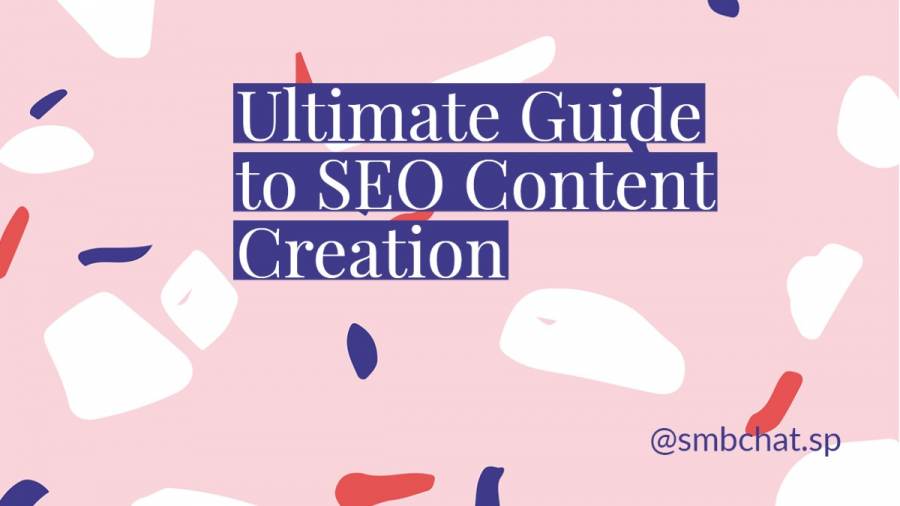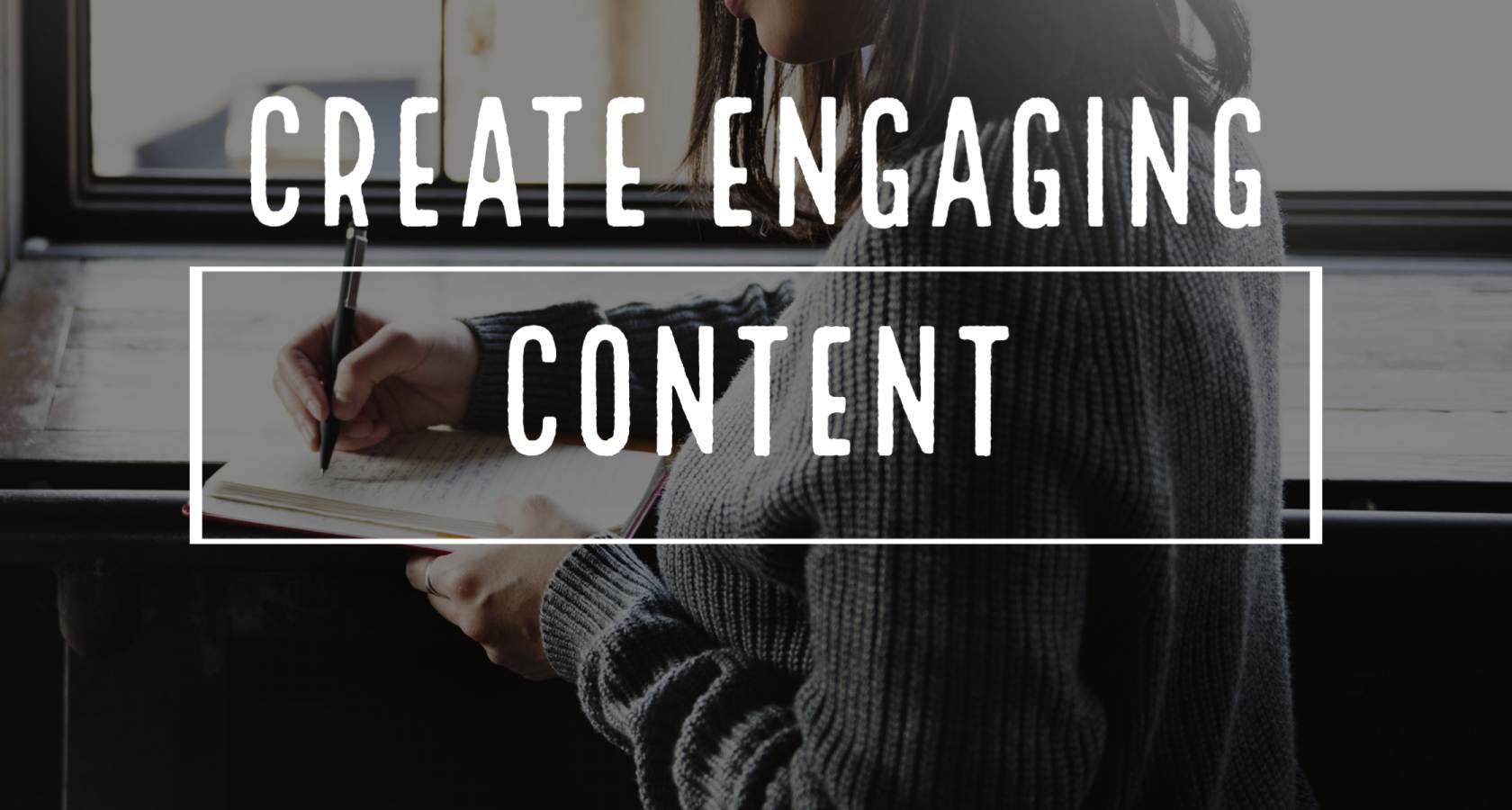A Really Good Guide to Writing Product Descriptions that Dazzle, Delight, and Above All, Convert
Let's play a game.
Close your right eye if you feel your product descriptions are not up to par. Close your other eye if you don't know why.
Oh frick, now we all can't see.
Something We Can All Relate to
Effective product descriptions, like these ones, are an incredibly rare find, and it's something everyone can relate to.
You're browsing the internet on a balmy, breezy afternoon in August. The weather has never been better, and all you want to do is get your eyes on that Forbes magazine special that's taken ages to be published. Then all of a sudden, an ad about a certain Amazon product that makes grey hair diminish in about 10 seconds pops up on the screen.
At this point, an internal debate is running through your head. You're trying to convince yourself to click that "cancel ad" button.
"OK, the product looks interesting
I think I can buy it as soon as today evening
But wait, did they just say it costs $1,000 on the first sentence
They're probably just after my money, and it's all just a total fad."
Aargh! You eventually can't contain your irascible inner self and decide to click cancel on the ad.
And there it goes…somewhere into the oblivion, besides millions of other product ads whose descriptions were just…meh.
That right there is the story of every other poorly-done product description that ever graced the internet.
How to Fix It: The Subtle Art of Create Compelling Product Descriptions
The struggle of writing perfect product descriptions- whether for Amazon or Shopify- and making sure they reel in the ideal customer is shared and universal. You're not alone.
Painting your product image in perfect light and having potential customers go ga-ga about its specs is probably the only thing that can bring eCommerce business owners, content marketers, copywriters, and designer watches manufacturers together, probably in a bar for some Budweiser therapy.
Not that they love each other. Rather, it's their misery that loves the company.
Now that we're done complaining, what can you do about it? This time, you're not fixing your product description issues with a few brews (at least not entirely). Instead, we'll give you the lowdown on a few tips so you can appreciate how:
- Writing Product Descriptions Is One Thing—Writing Great Ones is Another
- Detailed Product Content Can Supercharge Your Conversions Several Fold
- Having a Product Description Template is Crucial to Any Marketing Plan
But we're getting ahead of ourselves here. First things first, the definition.
What is a Product Description?
No cap: this is the last definition of product description you'll ever need.
A product description is, in its most basic form, a marketing copy. It explains what a product is and why it deserves to be bought.
Put differently, a product description strips product details down to their barebones, putting them in a way that makes the target buyer want to place an order right that instant.
Sadly, though, some product descriptions on the net are an outright embarrassment to the product description fraternity and the definition itself.
Writing Product Descriptions Is One Thing—Writing Great Ones is Another
Basic product descriptions do, well…they do the basic—tell the ideal customer of a product's what and how.
Good ones attempt to go a step further, explaining the why of a particular product in a succinct, eye-popping, (almost) believable way. They often sound pretty convincing and in most instances, can actually influence a purchase decision.
But great product descriptions? Now these ones are cut out of a different cloth.
Beyond describing a product in action (boooring), they position items as desirable, accessible, and an absolute must-buy. The copy itself bounces with oomph, zest, and brand personality. And no, they don't need 200 words to put the point across. Product features and their viability to daily life are woven together in great mastery—all in 50 words or less.
Simply put, great product descriptions:
- Bring on board brushstrokes of imagination and creativity—yep, even for those technical details
- Provide robust inspiration, providing vibrant, tangible reasons to buy
- Leap right off the page, quickly tugging at the reader's heartstrings and instantly putting them in the buying mood
- Ultimately, they drive online sales and propel the conversation rate right through the roof
Talking of conversions…
Detailed Product Content Can Supercharge Your Conversions 10×
OK, maybe that's a bit of an exaggeration, but you get the point. These statistics give a more accurate representation of how crucial product descriptions truly are.
- 20% of unsuccessful purchases are due to lack of product info (Nielsen Norman Group)
- 87% of shoppers regard product content as extremely important or very important when deciding to buy. (Salsify)
- 50% have returned an item they bought online because it didn't match the product description. Uh-oh. (Salsify)
- The most desired type of information that consumers seek about the products that they view online are product descriptions (76%), product reviews (71%), and images (66%)—in that order (Conversioner)
- The young guns or the millennial generation consumers are 40% more likely to be influenced by impressive product descriptions that they see online (Conversioner)
Enough said.
Having a Product Description Template is Crucial to Any Marketing Plan
After Budweiser, product descriptions are probably the best thing that has ever happened to business owners. In fact, the inventor of this marketing approach deserves a lifetime supply of free beer (cheers, everyone).
In all instances of writing effective product descriptions, people often assume that no hard and fast rules apply; that all it takes to explain product features like a pro is a bit of creativity and that's it; that it's possible to pull in the target reader with nothing more than "yeah, yeah" phrases and a gazillion objectives."
That couldn't be any further from the truth.
In reality, you need a tried, tested, and true template to bring your product descriptions to life. Quick fixes and cutting corners will only get you so far.
Your No-Fluff Product Description Template: 9 Tips to Make Potential Customers Fall Hook, Line, and Sinker for Your Products
Have you and your product team been operating on a spray and pray strategy—creating product descriptions on a whim and not giving a damn about the dos and donts of this rather delicate content marketing field? Then marketer, meet your product description template.
While you two are catching up, understand that creating effective product descriptions is essential for four reasons:
- To offer supplemental product information that a picture can't do on its own
- To please search engines and hopefully rank higher on SERPS for specific target keywords
- To (gently) shepherd potential customers towards making a smart purchase decision
- To trigger product selling, upselling, cross-selling in a way no other marketing copy can
With that said, here are nine tips that constitute the greatest product description template ever created (aha, we're that optimistic):
I know 9 sounds a lot, but there's a shortcut already... how about hiring a product description writer who has these at their fingertips?
1. Know Thy Target Customer (Like the Back of Your Hand)
If there's one thing your product description can't afford to be, it's to speak to everyone and no one at all. Your ideal customer should always be at the center of your strategy.
But first, you have to know who your target reader is.
Are they the type to frown upon words like "crappy" and "booger," or they're more liberal and easy-going? Or perhaps they like their content more straightforward, laconic, and devoid of gag?
But knowing your ideal buyer's tone, language, and humor preferences isn't enough on its own. You also need to determine their:
- Lifestyle demographic (i.e., car aficionados or new mothers)
- Gender (i.e., male or female)
- Age group (i.e., college students or retirees)
- Income level
- Interests
Knowing this helps you best discern which is the best type of product description to writeand how to go about the process.
Actionable steps
- Create your buyer persona from scratch: Think about your target reader. Imagine you're having a casual conversation with them at your favorite Budweiser joint. Or picture them standing next to your brick-and-mortar store, enquiring about one of your trademark products. How would that conversation go? Now try and replicate that onto your product descriptions.
- Learn from what others have found
- Conduct quantitative surveys
- Look to your competitors
- Listen to social conversations
Take Everlane, for example. They're a brand best known for selling high-end, eco-conscious fashion and accessories for men and women. And their product descriptions depict just how seriously they take their target customer.
Source: Everlane
Nothing to see here—just a description paragraph that makes potential customers feel as though they are talking to their friends, not a business. Words like "damn good" and "look your best" makes it all the more conversational and real.
2. Reel In Thine Target Buyer with Benefits, Not Features
Imagine you haven't cycled for years …
You really can't remember the last time you cycled.
But you want to get fit again, and biking seems fun.
You go to your local bike store and tell the super-sporty-looking shop assistant you're looking for a bicycle to tour around the area. Leisurely.
He tells you, all while brimming with enthusiasm, that a hybrid would be ideal and shows you a few popular models. This one has 24 gears and it has cantilever brakes. That one has a Shimano drivetrain and disc brakes. And here's a model currently on offer – it has an aluminum frame and hydraulic disc brakes.
Huh?
You have no idea what the guy is talking about. He makes you feel stupid. You feel like running home and giving up your plan about getting fit again.
Sounds strange?
It happens all the time on most eCommerce websites.
On these sites, product descriptions are full of features, product specifications, and technical details. But quite often, they forget to tell readers what's in it for them.
You don't want to be the guy that loses a ton of potential buyers just because you couldn't master the art of turning key features into benefits. Relax, though—we've got you sorted.
Actionable Steps
- Sneak into your customer's mind—what makes them lose sleep at night? What are their biggest pain points? What about glitches, frustrations, expectations? The answers you get here should get you going in the benefits department.
- Highlight a key benefit (or problem you avoid) in your product title or header so you can pique the reader's interest straight away
- Use a bulleted list to highlight a series of product features and benefits—because, let's be honest; lists are darn easy to scan
Five bucks, you're guilty of going back to our sporty guy example above and trying out these pointers already.
3. Avoid Sounding too Generic
Generic product productions can be a total turn-off. Immediately a target reader comes across product copy laden with generic phrases like "high-quality men's shoes" or "tight-fitting ladies' jeans," they'll be thinking, "Yada, yada, yada. That's what everyone says."
To avoid this sort of reaction, be as specific as possible.
Actionable Steps
- Ditch the technical details. It's the product specifications that sell.
- For every detail, let there be an irresistible benefit accompanying it
- Go short—short words, short sentences, short everything
This being #2 on our product description examples, we can't help but marvel at how Appsumo have embraced the persuasive power of short, snappy, highly-specific product descriptions.
Source: Appsumo
4. Legitimize Superlatives
Best. Most. Greatest. Excellent.
Nine times out of ten, you've likely come across one of these superlatives (or adjectives, if you may) in all of the worst product descriptions ever created.
But you know what else these superlatives have in common?
They can make your description paragraph sound artificial, insincere, and downright dishonest—unless, of course, you can justify them.
Is your product the best in its category? Fine. But can you prove it? The difference between good and bad product copy really comes to one thing: justification. And superlatives are your best bet in this regard.
Actionable Steps
- Clearly (read: c-l-e-a-r-l-y) prove why your product is the best, the easiest, the most advance…you get the drill.
- Otherwise, use a more minimalistic tone or quote existing customer testimonials. While it's good to be upbeat, honesty—as they say—is the best policy.
Let's use a quick example to clarify things further:
With generic superlatives: Google Pixel 6 is the world's most advanced smartphone
With legitimized superlatives: The new Google Pixel 6 is the world's most advanced smartphone, with cutting-edge resolution, a super-sensitive screen, unparalleled sound quality, and lightning-fast processing speeds.
Now that's what we call great product description writing.
5. Tell a Story (and Tell it Well)
Who doesn't love a good story?
Bedtime stories, war stories, ghost stories, that-awkward-thing-I-got-mocked-for-in-middle-school stories. Telling stories, both to ourselves and to others, is part of what makes us feel truly alive.
It's also a powerful marketing tool, especially for your product descriptions.
After all, you're selling online. Your potential buyers can't necessarily hold your products. Well-thought-out, easy-to-follow stories can help bring them closer to the action.
And, get this: Stories are remembered up to 22 times more than facts alone.
Actionable Steps
- Leverage evocative language, bold details, and great imagery
- Speak to humans, not search engines
- Show, don't tell
Here's how ThinkGeek stirs our imagination with a description so good that it'd fit for a movie script—all through sharp, witty (you guessed it) storytelling:
Here’s the actual description:
Source: ThinkGeek
6. Tease, Tempt, and Seduce with Sensory Words
There are adjectives, and then there are sensory adjectives—aka sensory words.
You might think that sensory words are for poets and novelists. For creative spirits. Not for serious people like you and me.
But that's not true.
Using sensory language can help you captivate your target reader—even if they have a demeanor like Steve Job's (no pun intended). Sensory words help readers experience your words, almost as if they're present, right in the middle of your story.
What's more, sensory details add personality and flavor to boring product descriptions, helping you stand out in a sea of grey voices that all sound the same.
Actionable Steps
- Be a sensational conversationalist—make potential customers feel as if you're inviting them for a casual chat over a steaming cup of coffee.
- Appeal to the senses—a crispy feel, a silky touch, a tingling flavor. Every sensory word you put down should be deeply felt and ultimately hit your target reader in the gut. But be careful not to go overboard.
- Be a little unpredictable—great product copy should never appear formulaic
Now, an example. This being #3 on our examples of product descriptions list, we've decided to put a little spin on it. Rather than look at how other brands have injected sensory words into their writing, we're going to give you a lifetime supply of sensory words (sorry, Budweiser fans).
Source: Pinterest
7. Whip in High-Quality Product Images
It goes without saying that images speak a thousand times better than words ever could.
You might be the best product description writer in the whole of the Southwest, but if your descriptions are lacking in the images department, you've already lost half of your potential customers.
Or more.
That's because 63% of customers think that a product image is more important than the description paragraph or even the product review.
Tough reality, huh?
However, it pays to sprinkle in high-quality product images from the get-go. When used together with great copy, images are very well capable of producing an accurate, pizzazz-oozing list of product features—all without using a single word.
In the end, your target buyer will be left touching, feeling, experiencing the sweet gizmos of your product…or whatever it that people do when they can't get enough of something.
Actionable Steps
- High-resolution is a must.
- Use different angles, dimensions, and perspectives to showcase unique product characteristics.
- Crop intelligently—try to fill as much whitespace with the product as possible.
- Add any special offers and customer reviews
8. Optimize, Optimize, Optimize!
You're confident about your product specs and the nifty human copy accompanying them. Your page speeds are lightning-quick, your images are professionally shot, and a recent round of testing has taken your conversation rate optimization to new heights.
Unfortunately, even if your product descriptions are optimized to sell, that fact alone may not be enough to impact the bottom line. After all, no one can buy your products if they can't find them on their favorite search engines.
And, if you aren't number one, you might as well not exist.
Once again, business owners, allow us to introduce you to SEO—the foundation of crafting Google-worthy product content that ranks highly on SERPs and gets noticed in about…2 seconds.
Here's your guide on how to go about product description SEO.
With that, we can confidently say that optimizing product copy for search engines is a no-brainer. Repeat: mandatory.
Actionable Steps
- Write for target buyers, not bots—when writing product copy, always ask yourself: Does this help the online buyer? Does it enlighten them, inform them, and ultimately nudge them towards making a smart purchase decision?
- Go heavy on benefits, but light on features.
- Target the right SEO product keywords—leverage the powerful trio of search volume, keyword difficulty, and longtail keywords to get to the bottom of a buyer's purchasing intent
- Keep it snappy
Check out how the brand Biossance uses the keyword "marine algae" for their bestseller product, a perfect example of how to "SEO" your product descriptions.
Here’s the actual description:
Source: Biossance
9. Look Back Into Thine Strategy—Evaluation
You've worked hard and done all the heavy lifting—your product descriptions ooze substance and finesse, your conversion rate is looking good, and your online sales are picking up quite fast. All by your own doing—congrats!
But before you sit back with that Budweiser and admire the budding eCommerce business empire you've built, ask yourself: how do you know it's working? After all this work, what if your product descriptions aren't living up to their potential? What if they're still turning away more potential customers than they're bringing in?
For the last time, business owner, meet KPIs. With KPIs and metrics, your days of trial and error on matters product descriptions are about to come to an end.
Above all else, KPIs are good for singling out issues, making an excellent reference for decision making, and are a great tool for outwitting your competition.
Actionable Steps
- Monitor and leverage common KPIs product description metrics like conversion rate, cart abandonment, organic search rankings, return rate, search inquiries, and so on.
- Run different A/B tests to see which KPIs bear the greatest significance to your product marketing campaign. Then pivot accordingly.
Where to Go From Here
If you think you've read the greatest "how to write product descriptions that sell" blog ever created, sure. But that's not even the best part.
The best part is that the writer behind this post is just one among many top-notch product copywriters at Zoey—and we can't wait to help you craft high-converting product descriptions that impress at every turn.
And yes, we really can create copy for any product.
Even if it's an existing product, we'll do our best to breathe new life into its (and your) legacy.
What's holding you back? Check out our product description writing services and add Zoey in your cart today!
Photo by Toa Heftiba on Unsplash: Thanks Toa : )

















